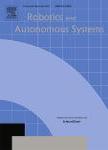版权所有:内蒙古大学图书馆 技术提供:维普资讯• 智图
内蒙古自治区呼和浩特市赛罕区大学西街235号 邮编: 010021

作者机构:Huazhong Univ Sci & Technol Key Lab Minist Educ Image Proc & Intelligent Control Sch Automat Wuhan Hubei Peoples R China
出 版 物:《ROBOTICS AND AUTONOMOUS SYSTEMS》 (机器人学和自控系统)
年 卷 期:2019年第112卷
页 面:123-136页
核心收录:
学科分类:12[管理学] 1201[管理学-管理科学与工程(可授管理学、工学学位)] 08[工学] 0811[工学-控制科学与工程] 0812[工学-计算机科学与技术(可授工学、理学学位)]
基 金:National Natural Science Foundation of China special program for technology innovation of Hubei Province, China [2016AAA039] Beijing Advanced Innovation Center of Intelligent Robots and Systems, China [2016IRS 10] China Scholarship Council
主 题:Odor source localization Chemical plume tracking Mobile robot
摘 要:When applied in some harsh environments (e.g. in poisonous atmosphere or underwater), odor source localization robots are able to perform better than animals without being hurt. During the past three decades, robotic odor source localization has become a popular research field with various algorithms being proposed. These algorithms can be roughly divided into four categories: gradient-based algorithms, bio-inspired algorithms, multi-robot algorithms and probabilistic and map-based algorithms. In this paper, we present a literature review of these four categories and discuss their pros and cons. We also discuss the current trends and some future challenges according to some research papers published in recent years. (C) 2018 Elsevier B.V. All rights reserved.